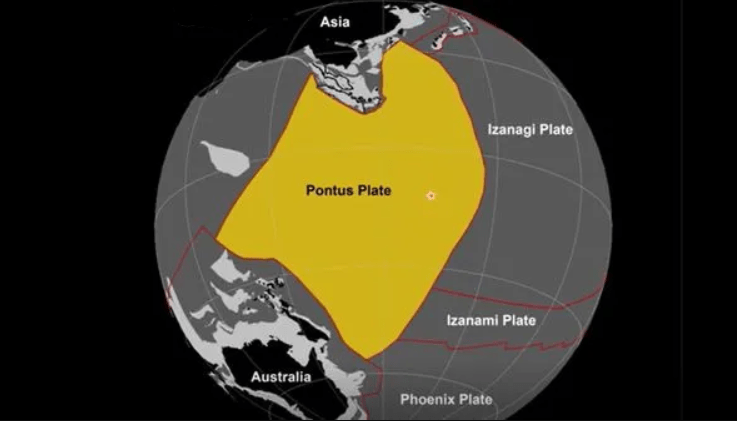Researchers Uncover Remnants of an Ancient Mega-Plate That Vanished 20 Million Years Ago
By chance, scientists studying ancient rocks in Borneo stumbled upon a tectonic plate, named ‘Pontus,’ which had been lost for a considerable time. This massive plate was a quarter the size of the Pacific Ocean.
After two decades of being lost to the annals of geological history, a tectonic plate that once formed the foundation of what is now the South China Sea has resurfaced, a remarkable rediscovery made 20 million years after its disappearance.
This enigmatic plate, referred to as the ‘Pontus plate,’ has left behind only a scant trace of its existence, manifesting as a collection of rock fragments extracted from the Borneo mountains and ghostly remnants hidden deep within the Earth’s mantle. In its prime, the Pontus plate was a colossal entity, encompassing a quarter of the Pacific Ocean’s expanse. Its name is derived from the Pontus Ocean, the sea it once resided beneath.
Suzanna van de Lagemaat, a doctoral candidate at Utrecht University in the Netherlands, expressed her astonishment, saying, ‘It’s surprising to find remnants of a plate that we just didn’t know about at all.’ Van de Lagemaat and her colleagues had initially been investigating the Pacific plate situated beneath the Pacific Ocean. Tectonic plates are in perpetual motion, constantly interacting with one another.
The dense oceanic plates tend to subduct under continental plates, ultimately vanishing from sight. Nevertheless, on occasion, fragments of a lost plate become incorporated into mountain-building processes, offering valuable insights into the historical whereabouts and formation of ancient plates.
During their fieldwork in Borneo, the researchers’ primary objective was to unearth remnants of an ancient lost plate referred to as the Phoenix plate. Scientists employ the analysis of rocks’ magnetic properties as a means of discerning the time and location of their formation. Suzanna van de Lagemaat explained that the Earth’s magnetic field becomes “locked in” to rocks when they originate, with the magnetic field’s characteristics varying with respect to latitude.
However, an unusual discrepancy surfaced as the researchers scrutinized the rock samples gathered in Borneo. “This latitude didn’t fit with the latitude we got from the other plates that we already knew about,” noted van de Lagemaat.
In their pursuit of solving this enigma, van de Lagemaat and her team resorted to computer models to investigate the geological history of the region over the past 160 million years. The plate reconstruction revealed an anomaly between what is presently South China and Borneo. The ocean, formerly presumed to be underpinned by an ancient plate known as the Izanagi plate, was discovered not to be associated with that plate. Instead, the rocks from Borneo filled this enigmatic void.
This revelation led to the identification of an entirely unknown plate that occupied the space, subsequently christened the Pontus plate by van de Lagemaat and her colleagues. The reconstruction, detailed in a publication dated September 29 in the journal Gondwana Research, indicated that the Pontus plate had its origins at least 160 million years ago, although it might have been even older. The rock samples retrieved from Borneo were found to be approximately 135 million years old. This colossal plate, which was once of considerable size, steadily diminished throughout its existence, ultimately descending beneath the Australian plate to the south and the Chinese plate to the north, ultimately vanishing 20 million years ago.
Intriguingly, research conducted by the same laboratory approximately a decade earlier also hinted at the presence of the Pontus plate. This prior investigation delved into the imaging of the Earth’s middle layer, the mantle, where subducted crust material ends up. It revealed a substantial section of crust whose origin remained unknown at the time, lacking a definitive source of provenance. As van de Lagemaat explained, it is now evident that this mysterious crust constitutes the residual remains of the Pontus plate.
This article is republished from SpaceCom under a Creative Commons license. Read the original article.
Do not forget to share your opinion with us to provide you with the best posts !





0 Comments